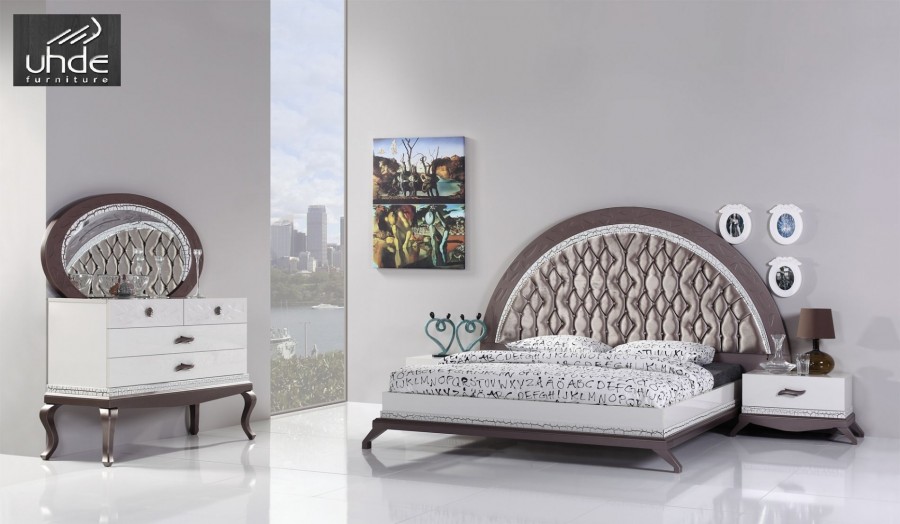By M. Nadeem Alizai-When it comes to fashion and style, Afghans living in urban areas keep keen eye on new fashion trends. For them fashion is not just about wearing latest dress and fancy shoes or use of expensive cosmetics. Home and décor also matters. They love to buy latest furniture in the market—either for homes or for offices.
Some may astonish that how people are affording expensive furniture aimed shrinking of foreign donations. However, for those who are familiar with the city life, the notion is not worth buying, because the donations were spent directly on projects or most of the funds were embezzled. Therefore, shrinking of the foreign assistance would affect those who are living in rural areas as people in the metropolitans work hard to sustain their lifestyle. Increase in sale of foreign-made furniture speaks volumes about the growing demand. Sales of branded furniture continue to swell on the growing domestic demand, but their market share still small. The furniture making industry has yet to exploit the untapped market potential.
Imports of stylish and classical furniture have also been on the rise as manufacturers have set up more distribution networks in the country and are reaching out to new local markets. Besides, local manufacturers, foreign companies exporting furniture to Afghanistan are earning foreign exchange for their country. Over the years, the growing urbanization and changes in life styles have boosted domestic demand for branded furniture. And furniture sellers have responded actively to cater to the rising demand. Though, the Afghanistan Chamber of Commerce and Industries lacks data in this regard, but looking at the market it is said that foreign-made furniture is very popular in Afghan cities. Demand of the Turkish furniture is all times high. There are different companies that have recorded growth in sales between 2008 and 2014. Many companies are expanding their presence in the country to explore more local markets. Market sources say that office furniture for newly established private enterprises and companies is on the rise. The total exports went by up to five percent, according to estimates that are not official.
Demand for home furniture through domestic sales superstores have surged as well. The furniture industry is largely undocumented in Afghanistan and over 50 percent of the market share remains in the informal sector. Taking that ratio as the basis and factoring in such important things like the estimated increase in total demand and supply and growth in sales of the furniture importing and selling companies, we can assume that this percentage is scaling new heights. Turkish and Emeriti furniture are enjoying at least 40 percent share in the Afghan market. Even small companies have also started to be doing well, in Kabul city as well as other major cities of the country including Herat, Kandahar and Mazar-i-sharif. In addition, some companies whose core business was not related to furniture have also started importing furniture and other products for offices and houses to benefit from a growing market for branded products.
Turkish Furniture in the capital city is prominent among the importers. The company is doing good business in the city and can even provide furniture on demand to its customers. Apart from the mentioned company, many other companies have also been set up in recent years. Some are importing China-made furniture and some are impelled to sale Turkish furniture due to the growing demand in the local market. Turkish furniture manufacturers sell their products in bulk to superstores in Afghanistan that also cater to the demand of retailers in their areas.
Looking at the latest trends and data it is clear that people love Turkish furniture more.
Why the demand for Turkish furniture is high? The reason is certain. The beds, chair and sofas are durable and have attractive designs that would give good impression to the guests or visitors. In most of private offices, executives want to give a positive image to the customers. One of the tactic they employee is buy Turkey-manufactured furniture. TV serials of Turkey telecasted by local media is also playing key role in convincing the potential customers to buy Turkish furniture. People want to buy what they love in movies and dramas.
Turkish versus China-made furniture: China-made beds, cupboards and sofas break during loading and shifting. Perhaps this is the key reason that prices of the furniture produced in the two countries differ. Turkish furniture is expensive. If a bed is produced locally, it will cost Afs20,000 while the same product imported from Turkey will cost Afs80,000. There is huge price difference. There is a perception that China makes cheaper products for third-world countries to capture markets there. However, this idea does not fit when it comes to furniture and Afghanistan. People in Afghanistan do love latest furniture but they also want to make sure the products are of good quality.
Though, high demand of the foreign-made furniture has irked local producers, but at the same time it also provides opportunity for growth. The local manufacturers could compete with Turkish or China-made furniture if they adopt modernity. Without introducing new trends, Afghan furniture could not compete in the local market. Once new technology and designs were applied, the day is not far when Afghanistan will export furniture to other Asian countries.
 Afghanistan Times
Afghanistan Times




